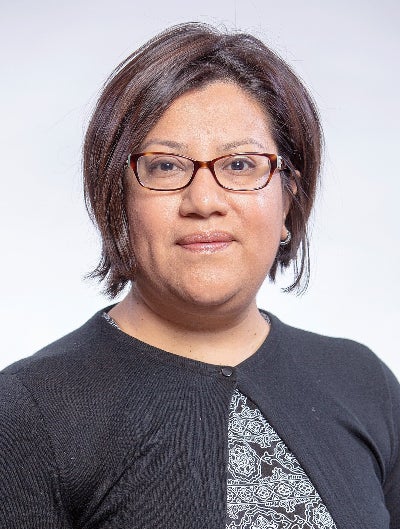Alumna Leads COVID Grant Analyzing Community Spread
Story text

While much of the regional focus on the COVID-19 pandemic has honed in on the city of Chicago, the outlying cities and towns that make up suburban Cook County are just as heavily populated as the city itself. A new grant project led by Abigail Silva, PhD ’13 and MPH ’98 in Epidemiology and an assistant professor of public health sciences at Loyola University Chicago, aims to ensure the diverse needs of suburban communities are not overlooked.
Funded by the Walder Foundation, the project titled “COVID Equity Response Collaborative Loyola: Understanding COVID-19 Transmission in Communities of Color” is launching a study with underserved Black, Hispanic and Latinx communities of west suburban Cook County that expands testing and aims to better understand factors promoting the spread of COVID-19.
“These communities are very different and more disparate and are often ignored in terms of resources,” Silva said. “We’re leveraging our partnerships in the community to extend [COVID-19] testing and inviting community members to be a part of the research.”
The project will build on efforts that began in spring 2020 to build free testing for Maywood community members. The grant will foster three areas of focus:
- Creating a bank of test swabs to analyze how the COVID-19 virus may change over time and to identify other viruses present in the sample
- Building a social network analysis from a voluntary questionnaire to identify factors that might place certain populations at risk.
- Launching a serology study to examine blood samples over a six month period to understand how antibodies develop and behave over a long period of time.
By determining the seroprevalence, percentage of asymptomatic infections, antibody durability and severity of symptoms, researchers will not only reveal critical information about COVID-19 spread and potential herd immunity but also help identify the degree and nature of health disparities in the spread of and antibody response to the virus. In addition, the study will characterize the personal networks of respondents, associating patterns of social capital with disease prevalence and spread and suggesting targeted intervention strategies to communities.
Selected Quote
Especially in clinical trials, including the COVID vaccine trials, people of color are not always included in the research. These populations are often the most negatively impacted [in a health crisis], and we need to know what is happening in these communities to be better prepared.
| PhD '13 and MPH '98 in Epidemiology
Story text, continued.
The project aims for specificity and speed that was lacking in the early days of the pandemic. Restricting person-to-person contact is a clear public health strategy, but employment status, socioeconomic factors and family demographics all impact how one can adhere to social distancing and quarantining guidelines. Silva says a detailed understanding of how the virus transmits in networks will enable public health practitioners to intervene quickly to protect people and slow the spread of the virus.
The antibody analysis seeks to contribute knowledge to the area of immunity. While the vast majority of documented reinfections that are often milder than the initial illness, in some cases it is more severe. Understanding why certain populations generate antibodies and for how long can again equip public health leaders with another tool to launch interventions and outreach to vulnerable populations.
Silva says the infrastructure created by this project can rapidly turn to support vaccine uptake and delivery. The relationships built in the spring with free COVID testing and strengthened with community-based research can foster educational opportunities to overcome vaccine hesitancy and address equity and accessibility questions.
“With every pandemic, we’re learning more and more,” Silva said, noting the SARS and H1N1 pandemics preceding the COVID-19 pandemic. “With these efforts, we will be more ready with conceptual frameworks and knowing what some of the barriers are when the next pandemic comes.”